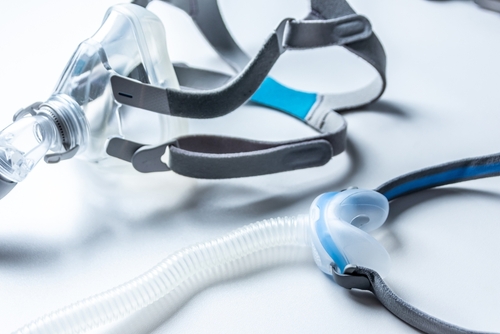A common but frequently misdiagnosed sleep disorder, sleep apnea presents serious obstacles to general well-being and physical health. Breathing irregularities that occur repeatedly throughout sleep are the hallmark of this disorder, resulting in fragmented and interrupted sleep. Obstructive sleep apnea (OSA), central sleep apnea (CSA), and complex sleep apnea syndrome—a mix of OSA and CSA—are the three main forms of sleep apnea. Whichever form it is, the effects of untreated sleep apnea can affect more than just exhaustion; they can also affect cardiovascular health, brain function, and general quality of life.

The most prevalent type of sleep apnea, known as obstructive sleep apnea, is brought on by excessive throat muscle relaxation that can partially or completely block the airway. This obstruction causes a brief stoppage of breathing, which is frequently followed by loud snoring while the person tries to get their breathing back to normal. The inability of the brain to properly signal the breathing muscles is the hallmark of central sleep apnea, on the other hand. Combining characteristics of central and obstructive sleep apnea, complex sleep apnea syndrome is more difficult to diagnose and treat.
Untreated sleep apnea has considerably more negative effects than just disturbed sleep. People who have sleep apnea are more likely to get diabetes, heart disease, stroke, hypertension, and other conditions. The cardiovascular system may be strained by the frequent reductions in blood oxygen levels that accompany sleep apnea episodes, which may lead to the onset or aggravation of these disorders. Moreover, sleep apnea’s persistent sleep loss can harm cognitive function, making it harder to focus, remember things, or make decisions.
The underdiagnosis of sleep apnea is a result of the disorder’s modest symptoms, which are simple to ignore. Loud snoring, gasping for air as you sleep, frequent awakenings with a feeling of suffocation, and excessive daytime sleepiness are common symptoms. These obvious signs of sleep apnea are not present in all cases, though. Some people may have headaches in the morning, be irritable, have trouble falling asleep, or have trouble paying attention without knowing why.
A sleep study is frequently used to diagnose sleep apnea. These studies can be carried out at a sleep center or at home using monitoring equipment. These investigations track a range of physiological indicators, such as oxygen saturation, brain activity, and airflow, while subjects sleep in order to spot patterns suggestive of sleep apnea. Treatment options for sleep apnea differ depending on its kind and severity after diagnosis.
For obstructive sleep apnea, continuous positive airway pressure (CPAP) therapy is a popular and successful treatment. This entails sleeping with a mask on over the mouth or nose that continuously blows air in to maintain the airway open. Adaptive servo-ventilation devices that modify airflow in response to identified breathing patterns may be suggested for patients with central sleep apnea. A change in lifestyle that includes losing weight, receiving positional therapy, and refraining from alcohol and sedatives right before bed can also help control sleep apnea.
In summary, it is critical to identify the symptoms of sleep apnea and seek prompt treatment in order to protect one’s physical and mental health. Untreated sleep apnea can lead to a number of serious health issues in addition to exhaustion. In order to promote peaceful evenings and general health, treating sleep apnea becomes increasingly important as awareness increases and diagnostic techniques advance. A qualified healthcare provider should be consulted if you think you or someone you know might have sleep apnea. This will ensure a correct diagnosis and the start of a successful treatment plan.